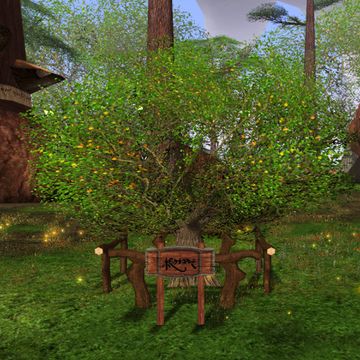Материал из ЭнциклопАтис
Lanstiril (обсуждение | вклад) |
Lanstiril (обсуждение | вклад) м |
||
| Строка 1: | Строка 1: | ||
| − | {{Trad | + | [[File:Rubber-Stamp-Lore choix Vert.png|64px|left|link=Category:To be check]][[Category:To be check]]{{Trad |
|DE=Salina | |DE=Salina | ||
|DEs=1 | |DEs=1 | ||
| Строка 5: | Строка 5: | ||
|ENs=4 | |ENs=4 | ||
|ES=Salina | |ES=Salina | ||
| − | |ESs= | + | |ESs=4 |
|FR=Salina | |FR=Salina | ||
|FRs=0 | |FRs=0 | ||
| Строка 12: | Строка 12: | ||
|H= | |H= | ||
|palette=matis}} | |palette=matis}} | ||
| + | The age of a '''салина''' is difficult to establish for it is a fast-growing tree. The [[Bodoc|bodocs]] would enjoy rubbing themselves on it, which would explain why the bark of салинас is often damaged. | ||
| + | <noinclude>[[File:Salina-Davae.jpg|360px|thumbnail|left|Dwarf салина<span id=Dav><sup>[[#Dav|*]]</sup></span> seen near the [[Davae]] market (the fence protects him from Nemus, the city's young bodoc mascot).]]</noinclude> | ||
| + | The colouring of the салина varies greatly depending on the season. It starts out white in winter, because of the snow accumulated in its branches, its flowers make it pink in the spring; it is green in summer (with red fruits), and changes to orange in autumn. | ||
| + | A magnificent tree whose foliage has a very recognisable ball shape, it produces a soft, sweet fruit named '''[[салин]]''', which is commonly used in the making of the traditional салин pie (thin crust, sliced салин, mashed салин, spices). As the size of the tree can reach 60 feet, its windfall fruit are sometimes used in cooking, which can give some taste surprises. | ||
| + | The tree has a timber of a beautiful amber colour and is used in joinery. | ||
| − | < | + | {{Clear}} |
| − | {{TIP | + | ---- |
| − | |DE=1 | + | <small>[[#Dav|*↑]] <span id=Dav>This one of a kind салина was planted in 2554 for the wedding of Karan [[Stevano]] and Filirae Tamiela Fera. For the residents it has been, since then, the ”'''Eternal Tree of the Karae'''”.</span></small> |
| − | |EN=4 | + | ----{{Last version link|Салина}}<noinclude>{{Портал|Флора}} |
| − | |ES= | + | {{TIP|DE=1|EN=4|ES=4|FR=0|RU=}} |
| − | |FR=0 | ||
| − | |RU= | ||
| − | }} | ||
[[Категория:Флора]] | [[Категория:Флора]] | ||
| − | [[Категория:Флора леса]] | + | [[Категория:Деревья]] |
| + | [[Категория:Съедобные растения]] | ||
| + | [[Категория:Флора леса]]</noinclude> | ||
Версия 19:36, 22 ноября 2019
The age of a салина is difficult to establish for it is a fast-growing tree. The bodocs would enjoy rubbing themselves on it, which would explain why the bark of салинас is often damaged.
The colouring of the салина varies greatly depending on the season. It starts out white in winter, because of the snow accumulated in its branches, its flowers make it pink in the spring; it is green in summer (with red fruits), and changes to orange in autumn.
A magnificent tree whose foliage has a very recognisable ball shape, it produces a soft, sweet fruit named салин, which is commonly used in the making of the traditional салин pie (thin crust, sliced салин, mashed салин, spices). As the size of the tree can reach 60 feet, its windfall fruit are sometimes used in cooking, which can give some taste surprises.
The tree has a timber of a beautiful amber colour and is used in joinery.
*↑ This one of a kind салина was planted in 2554 for the wedding of Karan Stevano and Filirae Tamiela Fera. For the residents it has been, since then, the ”Eternal Tree of the Karae”.
| [Скрыть] |
| |





